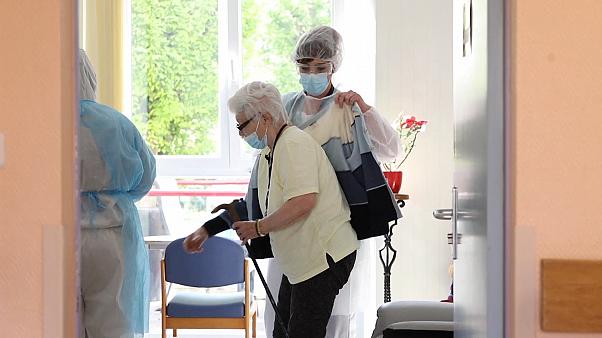What is an infection control checklist?
Ensuring you have the correct procedures in place to minimise the risk of infection within your nursing home is critical, especially in this day and age.
We’ve put together this handy checklist to help you get started.
Infection Control Checklist for Nursing Homes
Hand Hygiene
Ensuring you have hand hygiene practices in place is crucial. Your hands are one of the most active when it comes to spreading disease. It is important for operatives to wash their hands using soap and water or an alcohol-based hand gel whenever they’ve engaged in any support activity with a resident, as well as beforehand. By following strict hand hygiene methods, you’ll reduce the risk of contamination and infection spread.
It is also recommended that all operatives keep nails short and clean. Minimise the amount of jewellery each care assistant wears, including watches. If any of your staff has a cut, ensure this is covered with a waterproof dressing.
In order to assist with this process, the care home should have easily available hand washing stations for operatives to use. These should be within easy reach, so as to limit the number of surfaces a person has to touch to access the hand washing facility.
Be careful with Sharp Objects
Needles, stitch cutters, scalpels and other sharp instruments can cause injury and transfer infection. Ensure that all sharp objects are used carefully and then disposed off safely.
Use Appropriate PPE
Personal Protective Equipment protects the patient and yourself from infection. Items such as masks, goggles, gloves and aprons should be worn when dealing with waste or patients. This stops the transfer of any infection from one person to another.
Handling Chemical Waste
Your nursing home should have specific areas for personnel to handle and dispose of waste in a safe and clean manner. Training should be provided to ensure that all staff members are aware of the different colours used for each type of waste bag, and where each bag of waste should be handled and disposed of.
Managing Blood and Other Fluid Spillages
In the case of an accident where blood or other types of fluid are spilled, speed is of the essence. The area that the spillage took place should be disinfected thoroughly, with the contents of the spillage then swiftly and safely disposed of.
Disinfecting medical equipment
One of the most critical aspects of achieving cleanliness within the nursing home is ensuring all medical instruments are thoroughly disinfected after use.
To do this, a high heat must be achieved. The best way to get a thorough clean is to use a washer disinfector. This is much more effective than hand washing, as it ensures all angles are covered and are cleaned and disinfected at a high enough heat to kill the bacteria.
Maintain a clean environment
It should go without saying, but having a cleaning procedure in place to ensure that the home is clean at all times is critical to minimising the spread of infection. A good design of your waste disposal and instrument cleaning rooms will help spread infection from soiled products.
By consistently and thoroughly cleaning, you’ll remove soil, dust and micro-organisms that can transmit disease.
Final Thoughts
Cleanliness and reducing infection spread should be a top priority in every nursing home. By using the correct procedures, including following the elements within this checklist, you’ll be doing your bit to reduce the risk to yourself, your staff and your residents or patients. Using the correct equipment can help save time as well as ensure that your medical equipment is cleaned thoroughly.
At Dekomed, we can help you with your facilities planning, ensuring your washer disinfector fits securely and safely within your designated area. Our operatives are also on hand to provide advice on the best machine for the job, so get in touch today.

